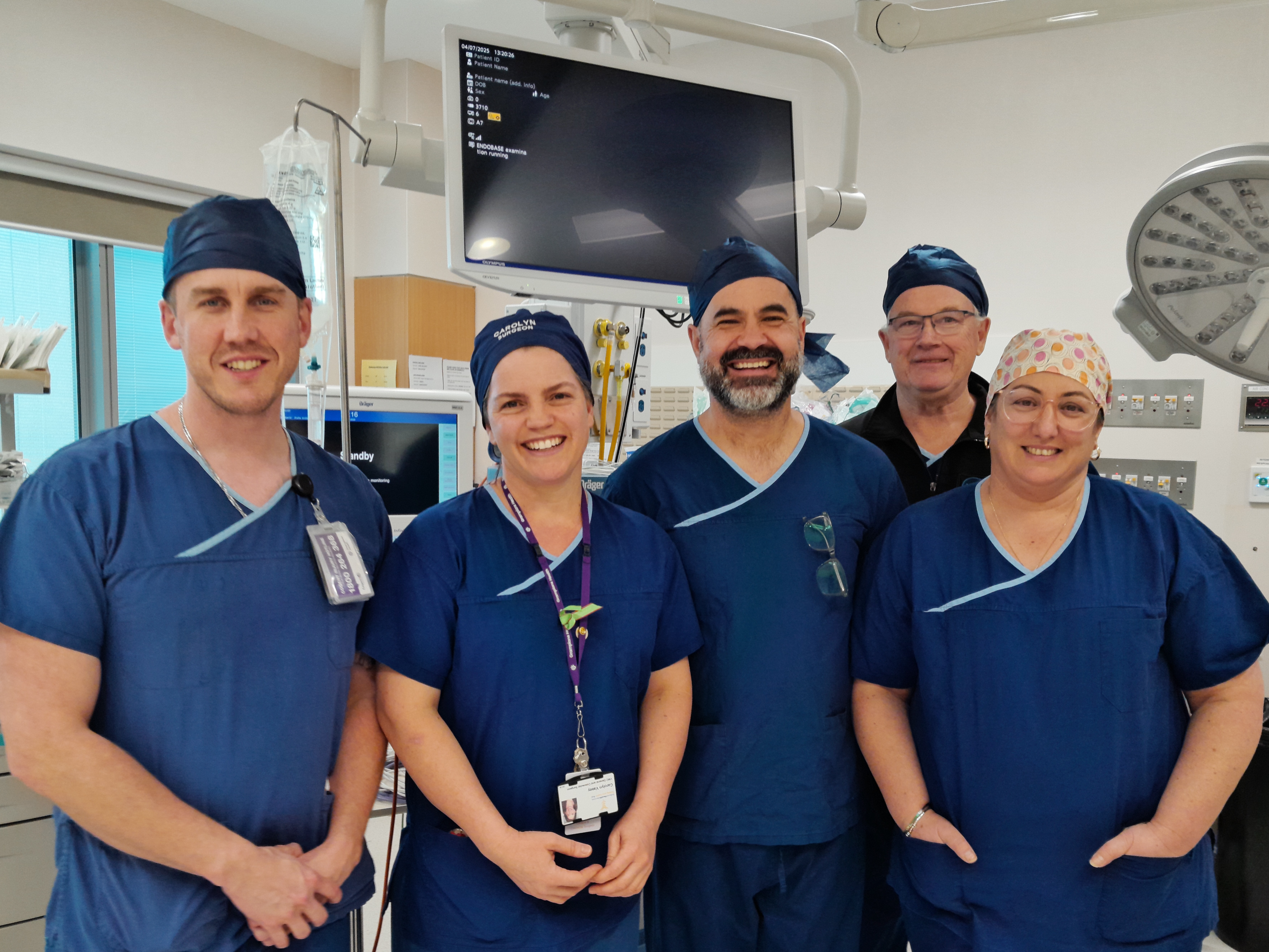Joy leads public hospital innovation with nation’s first emergency robotic surgeries
 (L-R) Kirk Underwood, Surgical Registrar; Dr Carolyn Vasey, Colorectal Surgeon and Medical Lead for Robotic Surgery; Dr James Ross, General Surgeon; Dr Doug Paxton, Anaesthetist, and Lucy Telfer, NUM Operating Theatre.
(L-R) Kirk Underwood, Surgical Registrar; Dr Carolyn Vasey, Colorectal Surgeon and Medical Lead for Robotic Surgery; Dr James Ross, General Surgeon; Dr Doug Paxton, Anaesthetist, and Lucy Telfer, NUM Operating Theatre.
A significant milestone was recently achieved by the operating theatre team at Grampians Health, when they successfully performed Australia’s first public emergency surgery using the state-of-the-art surgical robot.
Installed at Grampians Health’s Ballarat Base Hospital in 2023, the robot, affectionately named Joy in honour of a retiring operating theatre Nurse Unit Manager, has already assisted in over 440 elective procedures. Now, Joy has been used for the first time in three emergency operations.
The first emergency robotic procedure was performed on a patient who, according to Dr Carolyn Vasey, Colorectal Surgeon and Medical Lead for Robotic Surgery, Grampians Health “was an acute admission under our Gastroenterology team. A scan showed a complex bowel obstruction, which would normally require emergency open surgery.”
Traditionally, surgery for a large bowel obstruction involves a major operation, a large incision, intensive post-operative care, and a lengthy recovery. Robotic surgery is changing that.
Now, with minimally invasive robotic surgery, with smaller instruments, and smaller incisions, patients can recover much faster and prepare to go home much sooner. The reduction in hospital stay is significant, for both emergency and elective procedures.
“The surgical robot has completely changed what I expect to see the day after a large bowel obstruction surgery. What truly amazed me after this procedure was seeing the patient the next day – sitting up, eating lunch, and giving me a high five!” said, Dr Vasey.
Chief Medical Officer Matthew Hadfield, added, “The surgical robot is currently being used across a broad range of surgical disciplines at Grampians Health, including colorectal, urology, upper gastrointestinal, hernia, thoracic surgery, and gynaecology oncology. With the robot now fully integrated into our practice, we’ve been exploring its potential for emergency procedures. There’s growing confidence in performing more selective emergency cases over the next six to twelve months.”
The continued growth of the robotic surgery program at Grampians Health is largely credited to its cohesive medical community.
“We now have new surgeons trained on the robot, and we’re also training our registrars using our dual console”, said Dr Vasey. “This means our registrars are starting to get time on the console, allowing for a gradual and confident expansion of our skills across the whole team.”
Dr Vasey also highlighted that the success of the public robotic surgery program is largely due to collaboration between teams within Grampians Health.
“It’s not just the surgeons – it’s the anaesthetists, nursing staff, information technology, governance and credentialing, our executive team, and many others who have all been incredibly supportive. Having all these groups meet face to face and work together has allowed us to achieve more. It’s a real organisational strength.
“It’s a multi-specialty robotic program with a flat hierarchy. We all work together, and the strong local connections mean people are genuinely supportive of one another. That kind of teamwork is invaluable when building a robotic program like this.”

